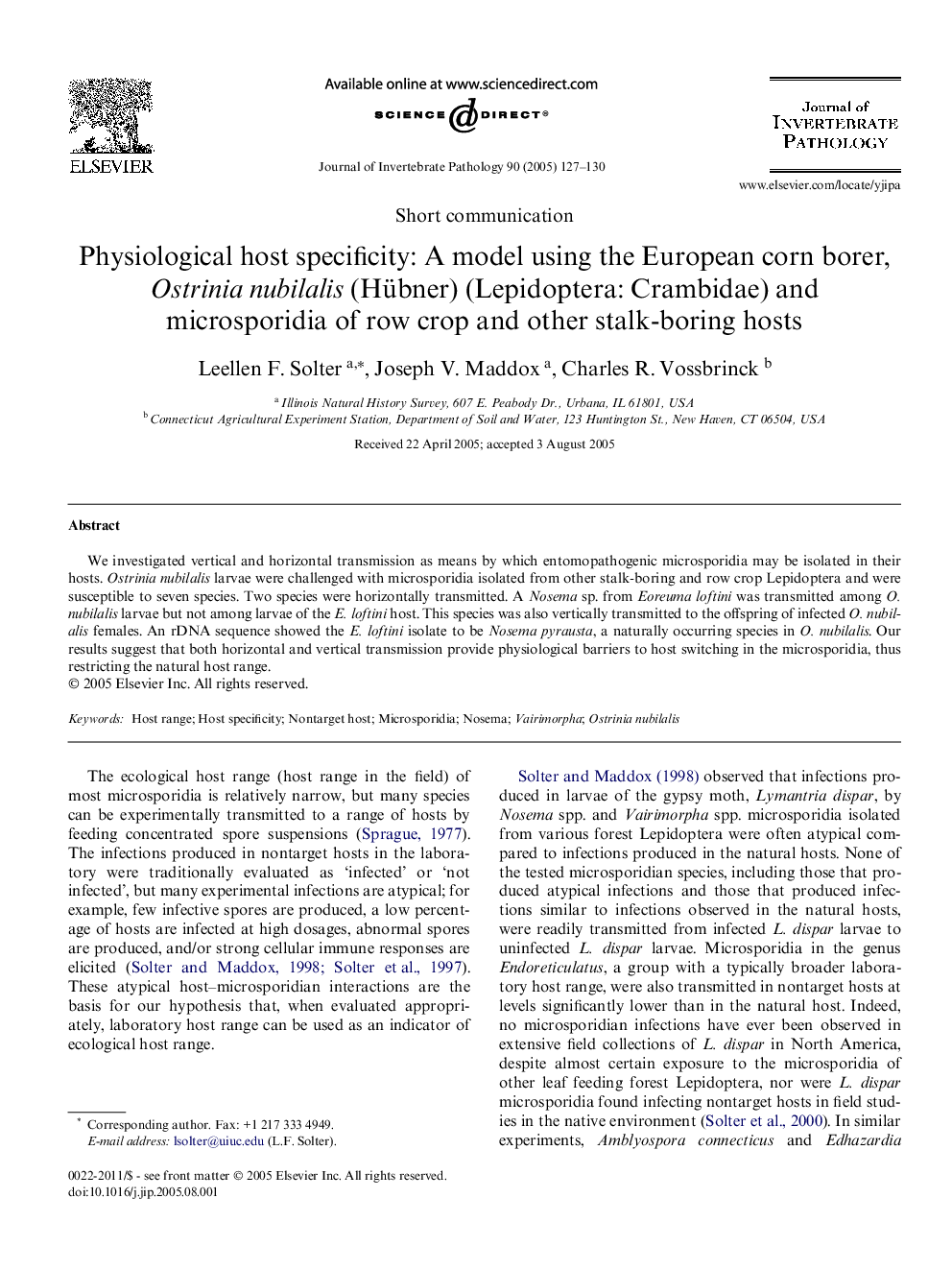| Article ID | Journal | Published Year | Pages | File Type |
|---|---|---|---|---|
| 9486347 | Journal of Invertebrate Pathology | 2005 | 4 Pages |
Abstract
We investigated vertical and horizontal transmission as means by which entomopathogenic microsporidia may be isolated in their hosts. Ostrinia nubilalis larvae were challenged with microsporidia isolated from other stalk-boring and row crop Lepidoptera and were susceptible to seven species. Two species were horizontally transmitted. A Nosema sp. from Eoreuma loftini was transmitted among O. nubilalis larvae but not among larvae of the E. loftini host. This species was also vertically transmitted to the offspring of infected O. nubilalis females. An rDNA sequence showed the E. loftini isolate to be Nosema pyrausta, a naturally occurring species in O. nubilalis. Our results suggest that both horizontal and vertical transmission provide physiological barriers to host switching in the microsporidia, thus restricting the natural host range.
Related Topics
Life Sciences
Agricultural and Biological Sciences
Ecology, Evolution, Behavior and Systematics
Authors
Leellen F. Solter, Joseph V. Maddox, Charles R. Vossbrinck,
